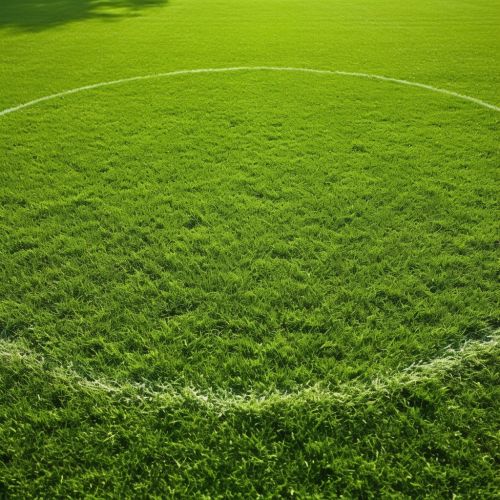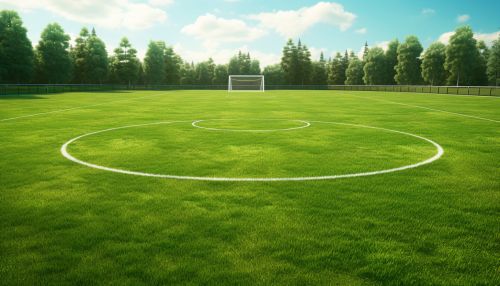Laws of the Game (association football)
Introduction
Association football, more commonly known as football or soccer, is governed by a set of rules known as the Laws of the Game. These laws are maintained and updated annually by the International Football Association Board (IFAB), an independent body consisting of representatives from the four British football associations and FIFA. The laws cover all aspects of the game, from the dimensions of the pitch and the ball, to the roles of the players, officials, and equipment, and the procedures for starting, stopping, and restarting play.
History
The first known rules of football were drawn up in 1863 by the newly formed Football Association (FA) in England. These original laws were somewhat different from the ones we know today, with teams of up to 20 players, no crossbars on the goals, and a round ball that was not inflated to any particular pressure. Over the years, these laws have been revised and added to, resulting in the comprehensive set of 17 laws that govern the game today.
The Laws
The Laws of the Game are divided into 17 sections, each covering a different aspect of the game. These laws are designed to ensure fair play and to provide a framework for the conduct of the game. They are applied by the match officials, led by the referee, who has the final say on all matters of fact and interpretation.
Law 1: The Field of Play
The field of play must be rectangular and marked with lines. The two longer boundary lines are called touchlines, and the two shorter lines are goal lines. The field is divided into two halves by a halfway line. The centre mark is indicated at the midpoint of the halfway line and a circle with a radius of 9.15 m (10 yds) is marked around it. The size of the field can vary within the limits defined in Law 1.


Law 2: The Ball
The ball must be spherical, made of suitable material, and of a certain size and weight. It must be inflated to a certain pressure and be approved by the referee.
Law 3: The Players
A match is played by two teams, each consisting of not more than eleven players, one of whom is the goalkeeper. A match may not start or continue if either team has fewer than seven players.
Law 4: The Players' Equipment
Players must wear a jersey or shirt, shorts, socks, shin guards, and footwear. The goalkeeper must wear colours that distinguish them from the other players, the referee, and the assistant referees.
Law 5: The Referee
The referee has full authority to enforce the Laws of the Game and all decisions are final. The referee's duties include starting and stopping play, disciplining players, and stopping the match for any infringements of the laws.
Law 6: The Other Match Officials
In addition to the referee, there may be two assistant referees, a fourth official, and additional assistant referees. These officials assist the referee in enforcing the laws.
Law 7: The Duration of the Match
A standard match lasts 90 minutes, divided into two halves of 45 minutes each, with a 15-minute half-time interval. The referee may add additional time for stoppages.
Law 8: The Start and Restart of Play
Play is started with a kick-off at the centre of the field. After a goal, the team that conceded the goal kicks off. Play is restarted with a dropped ball if it was stopped due to an outside interference.
Law 9: The Ball In and Out of Play
The ball is out of play when it has wholly crossed the goal line or touchline, whether on the ground or in the air, or when play has been stopped by the referee. It is in play at all other times.
Law 10: Determining the Outcome of a Match
A goal is scored when the whole of the ball passes over the goal line, between the goalposts and under the crossbar, provided that no infringement of the laws has been committed. The team scoring the greater number of goals is the winner. If both teams score an equal number of goals, or if no goals are scored, the match is drawn.
Law 11: Offside
A player is in an offside position if they are nearer to the opponent's goal line than both the ball and the second last opponent when the ball is played to them, unless they are in their own half of the field. Being in an offside position is not an offence in itself, but a player can be penalised for being offside if they become involved in active play.
Law 12: Fouls and Misconduct
Fouls and misconduct are penalised with free kicks, penalty kicks, and disciplinary sanctions such as cautions (yellow cards) and dismissals (red cards). Serious fouls may also result in suspensions or fines.
Law 13: Free Kicks
Free kicks are awarded for infringements of the laws. They can be either direct (from which a goal can be scored directly) or indirect (from which a goal can only be scored if another player touches the ball before it enters the goal).
Law 14: The Penalty Kick
A penalty kick is awarded for certain fouls committed by the defending team within their own penalty area. The kick is taken from the penalty mark, 11 m (12 yards) from the goal, and all other players must be outside the penalty area and at least 9.15 m (10 yards) from the penalty mark.
Law 15: The Throw-In
A throw-in is awarded when the whole of the ball passes over the touchline, on the ground or in the air, from the point where it crossed the line. The throw-in is taken by a player of the team that did not touch the ball last.
Law 16: The Goal Kick
A goal kick is awarded when the whole of the ball passes over the goal line, on the ground or in the air, having last touched a player of the attacking team, and a goal is not scored.
Law 17: The Corner Kick
A corner kick is awarded when the whole of the ball passes over the goal line, on the ground or in the air, having last touched a player of the defending team, and a goal is not scored.
